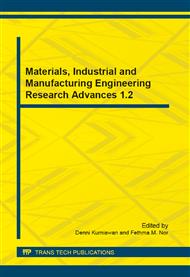[1]
Guo D, H Ju, Y Yao, F Ling, and T Li, Efficient Algorithms for the Kinematics and Path Planning of Manipulator, 2009 International Conference on Artificial Intelligence and Computational Intelligence, (2009).
DOI: 10.1109/aici.2009.241
Google Scholar
[2]
Gasparetto A, V. Zanotto, Optimal trajectory planning for industrial robots, Advances in Engineering Software, 41( 2010) 548–556.
DOI: 10.1016/j.advengsoft.2009.11.001
Google Scholar
[3]
Berglund T, A Brodnik, H Jonsson, M Staffanson, and I Söderkvist. Planning Smooth and Obstacle-Avoiding B-Spline Paths for Autonomous Mining Vehicles, IEEE Transaction on Automation Science and Engineering. 7 (2010) 167-172.
DOI: 10.1109/tase.2009.2015886
Google Scholar
[4]
Maekawaa T, T Nodab, S Tamurac, T Ozaki, and K Machidaa, Curvature continuous path generation for autonomous vehicle using B-spline curves. Computer-Aided Design. 42 (2010) 350-359.
DOI: 10.1016/j.cad.2009.12.007
Google Scholar
[5]
Mat Ghani M. F, N. Foulidenejad, J. Mohd Taib, and A. Dzakaria, Development of Cubic Motion Curve, 4th International Graduate Conference on Engineering Science & Humanity 2013 (IGCESH2013), 16- 17 April (2013).
Google Scholar
[6]
Viktor M, P Wagner, and J Cernohorsky. Constrained Optimization of Robot Trajectory and Obstacle, 15ht IEEE International Conference on ETFA, 13 – 16 Sept (2010).
DOI: 10.1109/etfa.2010.5641276
Google Scholar
[7]
Jihua H, H S Tan, F Bu, and S-K Chen, An investigation on driver trajectory planning behaviors based on double lane change vehicle test data, 14th International IEEE Conference on Intelligent Transportation Systems (ITSC), 5-7 Oct. (2011).
DOI: 10.1109/itsc.2011.6083115
Google Scholar


